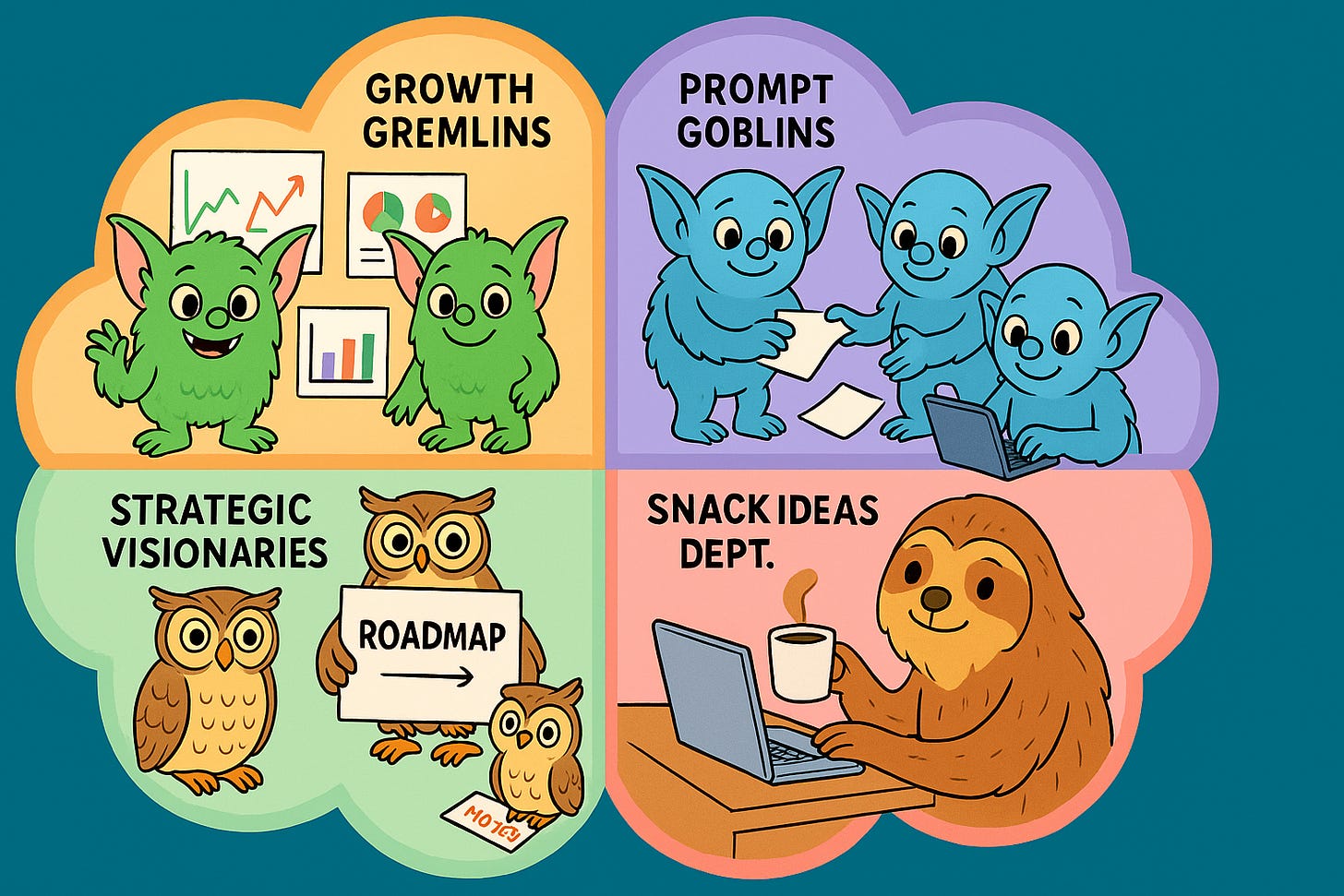Four great reads for 5/14/2025
From AI fluency to growth sequencing, strategic rigor to cynical prompting: four guides for building smarter, faster, and with more intentionality.
How to Get Better at Strategy? (Will Larson)
Larson closes his forthcoming book on engineering strategy with a meta-strategy: write your own plan for getting better at strategy. He offers four pillars. Explore public artifacts (engineering blogs, company postmortems) but read between PR lines. Excavate private sources, “strategy archaeologists” inside your org and peer networks, then catalogue them in a personal repository. Practice without permission by drafting and debugging team-level strategies, even if you lack org-chart authority; lower the altitude until no one can stop you. Finally, operationalize the habit: track every strategy you read, write, or refine; review quarterly with a learning circle that’ll call your bluff if you coast. His refrain: you’re never “too busy” for strategy—if you haven’t written one in six months, face that you simply don’t value it. A tough-love roadmap for turning strategy from occasional deck into weekly craft. (link)
What Is Strategy? (and What It Isn’t) (Dan Olsen)
The most overused word in product gets a much-needed dusting off. Olsen distills three dictionary definitions into one line: “a plan based on consequential choices designed to achieve long-term success.” Then he sharpens the edges by contrast: vision inspires, mission explains purpose, slogans sell, but strategy means saying no. Good strategy commits to one path, precluding others; if you’re not rejecting ideas, you’re still at tactics. And while he borrows Bezos’s “one-way vs. two-way doors” to claim that strategy is a one-way door, I’m not sure that’s true. A useful primer for teams that keep shipping “roadmaps” nobody can actually kill. (link)
How to Sequence Your Growth Squads (Elena Verna)
Verna argues most “growth” orgs fail before they start because they hire teams in the wrong order. Her rule of four: Activation → Monetization → Acquisition → Retention. Nail first value, then price it, then pour fuel on TOFU; otherwise, you’re “churn with extra steps.” She outlines squad charters, metrics, and when to spin up rogue teams like Growth Infra or Experimentation SWAT. Budget guidance: growth should hover at ~25 % of R&D once you hit $30 M ARR. If you’re lobbying for headcount, this article is basically your slide deck. (link)
The Cynical PM’s Prompt Playbook (Justin Williams)
Williams delivers a profane, hilarious field guide to “robot whispering” in 2025. Four techniques anchor the manifesto: Contextual prompting (treat prompts like UX specs), Persona prompting (make the model role-play Steve Jobs or your grumpiest customer), Step-by-step prompting (force LLMs to show their work), and the nuclear option: let AI fix your dog-shit prompts. Alongside, he drops rapid-fire hacks (politeness boosts accuracy 9 %, store prompts as swipe files, different models for different moods). Beneath the snark is a serious thesis: prompt design is the new UX layer, and product managers who can’t wield it will get lapped by “Chad from growth” high-fiving himself in Slack. (link)

